We love travelling around Canada in a van, but there are certain necessities that are a little more tricky to find than others. Finding public showers can be particularly hard to find. Water and internet were the other two necessities that we had to prioritise locating every few days or so.
- You may be thinking ‘hang on, since when is internet an essential?’ Well, if you maintain an online business and use email as your most common form of communication then, yes, it does become one!
- I will also note here that food and camping fuel are also obviously pretty crucial on a long road trip, but luckily they are very easy items to find and store, even in the most remote areas of Canada.
This post includes affiliate links. If you make a qualifying purchase through these links, I may receive a small percentage of the sale at no extra cost to you.
Important note
These tips are aimed at people travelling Canada in small vehicles, typically converted ones like our Astro or Savana van. Some of the following advice isn’t really appropriate for people in RVs and truck campers for a variety of reasons.
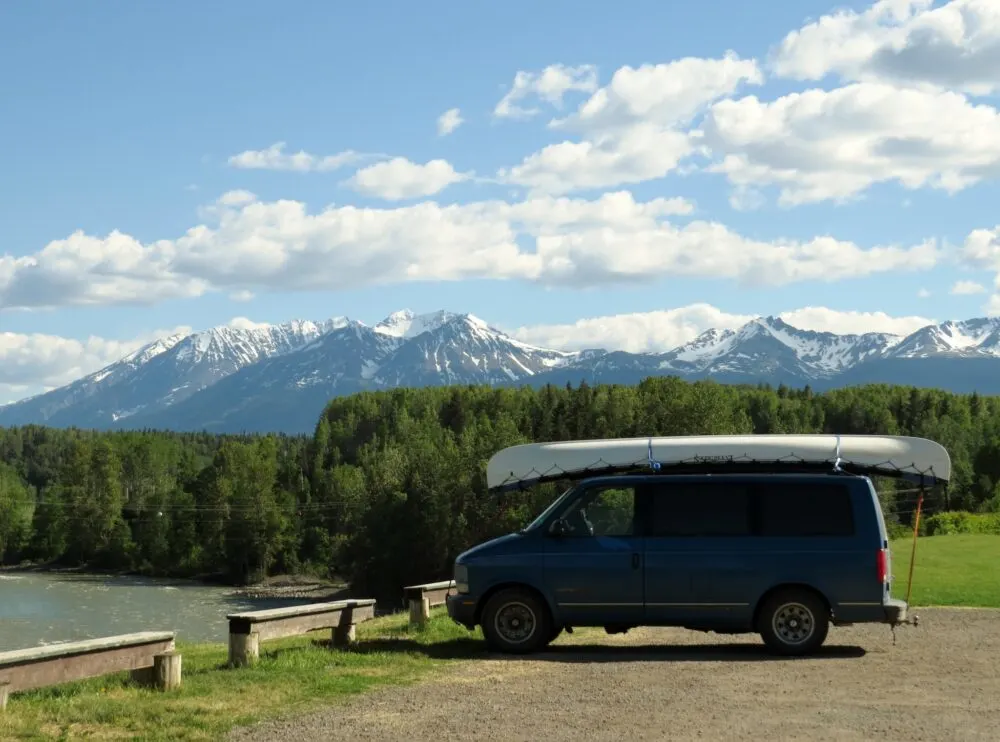
Backcountry necessities
- Always bring the 10 Essentials
- Know how to stay safe in the backcountry
- Remember to Leave No Trace to help keep the wilderness wild
- Understand how to avoid negative bear encounters
- Trying out backpacking for the first time? Read Backpacking 101
- Check out our packing guide with gear recommendations
- Sign up to our newsletter for a free backpacking checklist
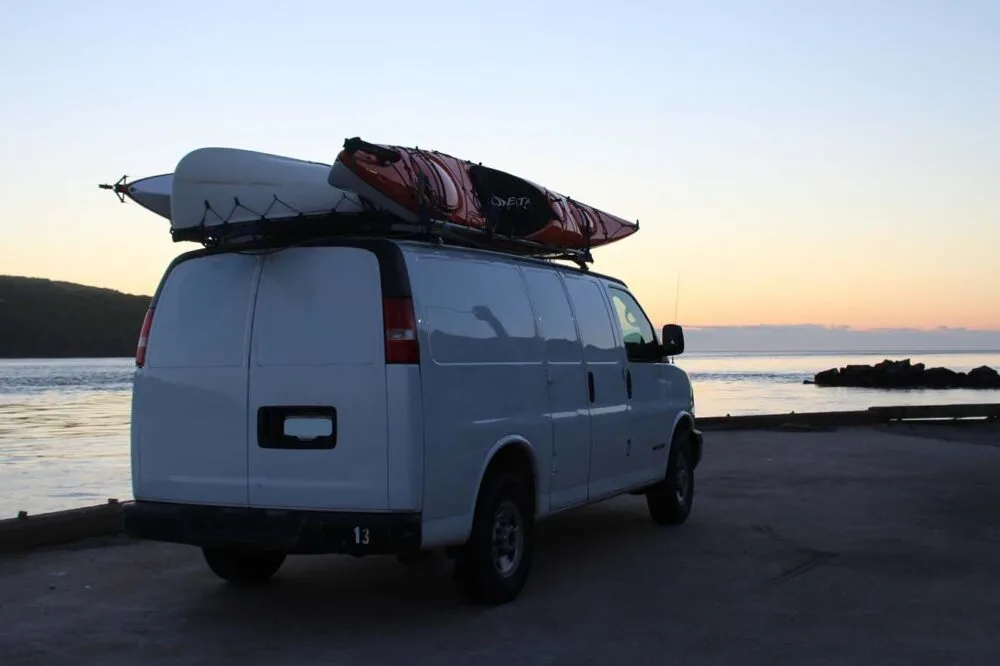
Vanlife Essentials 1: Water
If you’ve never been on a long road trip or backpacking adventure, you may not immediately think of water as something difficult to find. Bottled water is of course freely available in shops, but a collection of bottles is both wasteful and bulky. Instead, buy a large water storage container from Canadian Tire or Walmart and fill it up en route.
We use a 10L container alongside some smaller day-to-day reusable bottles (3L and 2 x 1L). This combination usually lasts us three days, using the water purely for drinking and some cooking. Where possible we also use boiled (reasonably clean and clear!) lake/river water for cooking.
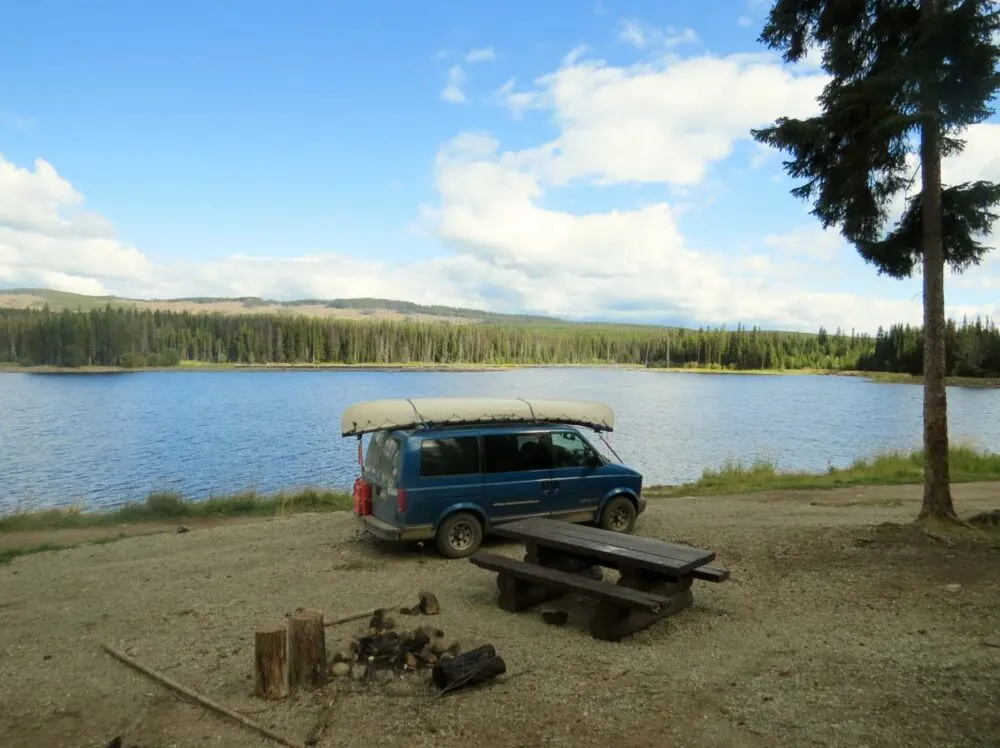
Recommendations for filling up a 10 or 20-litre water container:
Municipal taps – Our favourite source of free water; we always appreciate it when local towns provided a place for travellers to get water.
Visitor Information – Some have a tap outside for RV travellers. If not, ask specifically where to fill up a small container with water. Always emphasize how small the container is, as we find that the staff often assume you mean a large RV tank. A few visitor centres offered us the staff facilities (kitchen, cleaning room) to fill our water container since it was such a small amount.
Provincial, National or Regional Parks – We have great success with Provincial Parks with campgrounds and/or significant visitor services (think nature trails, picnic areas etc). The tap may be in the day-use area or in the campground itself. Again, since we only needed a small amount we never had any problems. Note that the taps are usually turned off in September/October for winter.
RV Parks/Campgrounds – Some RV Parks charge for facilities such as water fill-up on top of the parking fee. While stopping for showers, we would ask how much it would be to fill our water container and a few times they did it for free.
Retail stores – With approval from the store manager, you may be able to use an external water tap at big-box stores such as Canadian Tire. Also look for RV service areas. Sani-dump facilities usually have a charge, but water is often free.

Vanlife Essential 2: Public showers
As mentioned, finding public showers can be one of the most difficult parts of vanlife. For those times a cold lake or solar shower doesn’t seem like a viable option, try these suggestions for locating public shower near you.
Recommendations to find showers while on the road:
RV Parks/Campgrounds – RV Parks usually charge for showers on top of the parking rates. Knowing this, we sometimes stop at an RV Park and ask to use the showers. Some RV Parks do not want non-staying visitors coming in and using the facilities so don’t take it personally if they say no.
Most are fine about it and will either sell you shower tokens or give change. The most common price we have found is $2-3 for six minutes. The showers in Eagle Plains (NWT) were free, even to non-camping visitors.
Marinas – If you’re travelling near the ocean, a marina is usually a surefire place to find public showers. Sometimes they are only available for use by members, but if you manage to speak to a staff member they may be fine with it. Again, tokens and/or change are usually needed and the shower will be timed.
Swimming pools – We don’t usually do this because JR is not a big fan of chlorine, but one of the easiest options is to go for a swim and have a shower afterwards. A lot of swimming pools in Canada have jacuzzi and sauna facilities, so you could even make an afternoon of it. This is a more expensive option, but definitely more fun than a visit to an RV Park!
Hot Springs – A bit location limited, but are hot springs dotted across the Rockies and British Columbia. Most have public showers alongside changing rooms. In a similar way to swimming pools, this can be a nice excuse for a relaxing afternoon! My favourites are definitely Liard and Radium hot springs in British Columbia.
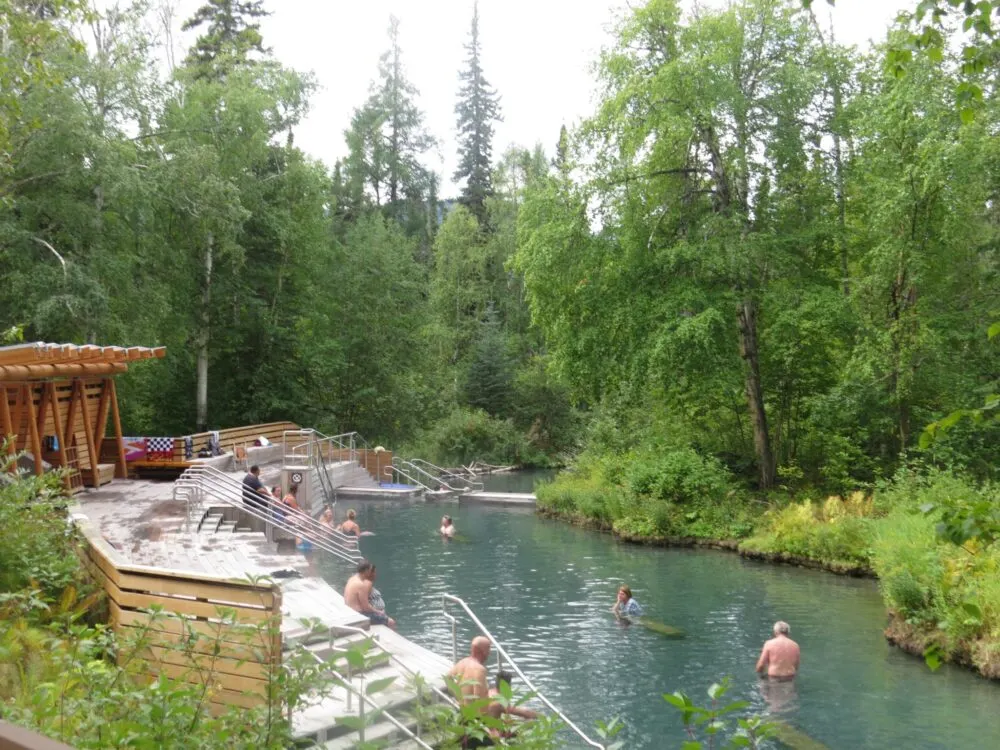
Vanlife Essential 3: Internet
A 21st century ‘essential,’ we tried to find wi-fi every time we were in a large town or city. Any municipality too small for a Tim Hortons/another coffee shop, we would usually just park up and tether our cell phone’s 3G connection to the laptop.
The problem is that there is scarce phone signal outside of municipalities in BC, Yukon and NWT. The East is generally better. And, of course, Canadian phone companies aren’t exactly generous with data so it doesn’t last long.
Coffee shops and cafes – Get your emails and work done for the price of a coffee or two. Starbucks are ubiquitous in Canada, but also check local and independent coffee shops where possible.
Libraries – Most Canadian libraries offer free wi-fi. My preferred place to work, the larger libraries have desks, water coolers and convenient power supply. My tip? Take headphones as libraries are not always as quiet as you think they’d be.
Tim Hortons, A&W & McDonalds – Most Canadians towns of a reasonable size will have at least one of these chain fast-food restaurants. They offer reliable and reasonably consistent wi-fi, even if you’re parked outside (…while eating or drinking a purchase from the drive-thru of course).
Visitor Information Centres – The larger versions of these usually have free wi-fi or will know of other local places to get it.

Adventure in your inbox
Subscribe to our monthly email newsletter and receive a round-up of our latest outdoor adventures plus other exciting beyond the beaten path destinations
We never share your information with third parties and will protect it in accordance with our Privacy Policy
Check out these other posts about vanlife in Canada

One half of the Canadian/British couple behind Off Track Travel, Gemma is happiest when hiking on the trail or planning the next big travel adventure. JR and Gemma are currently based in the beautiful Okanagan Valley, British Columbia, Canada

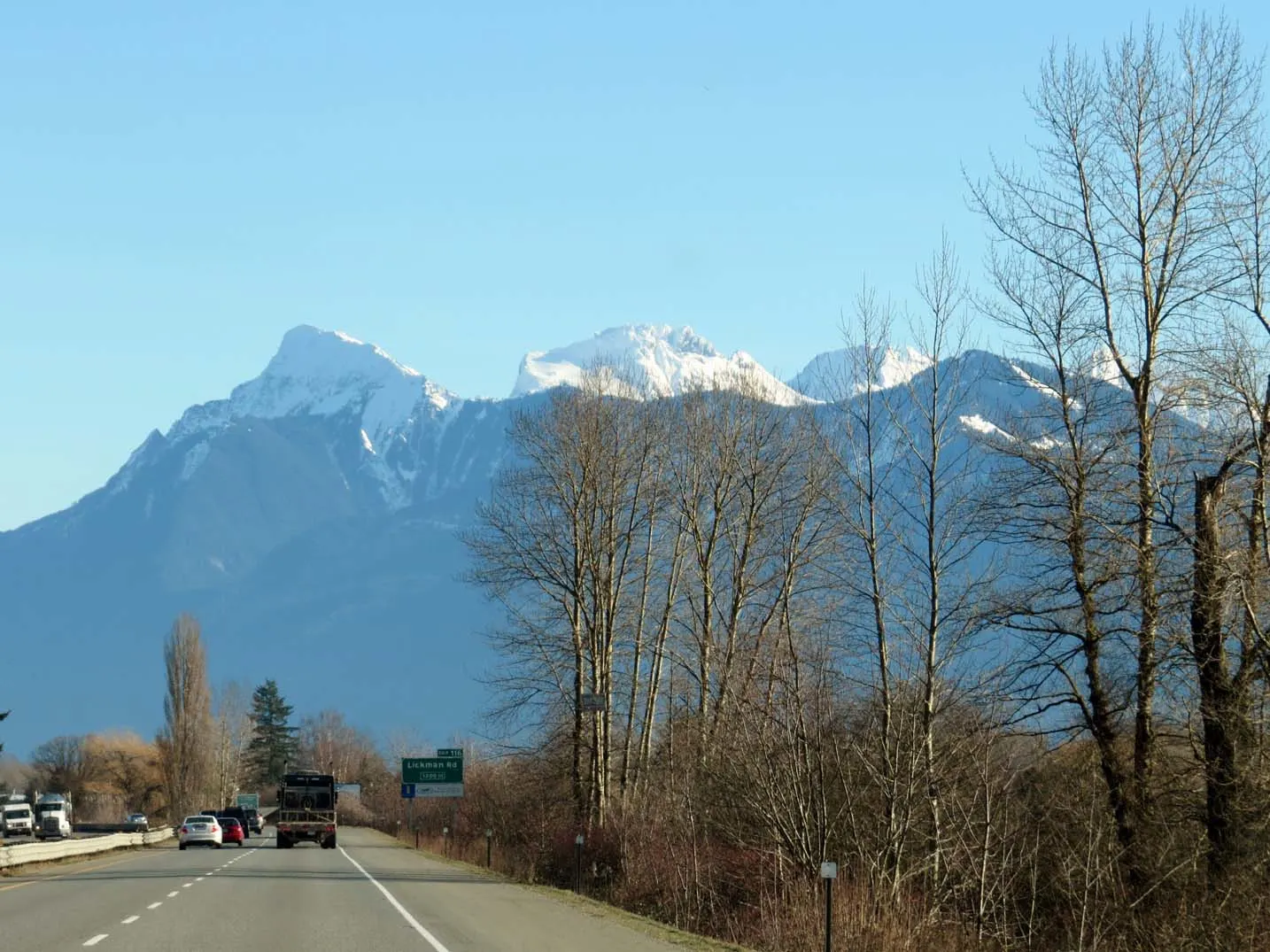

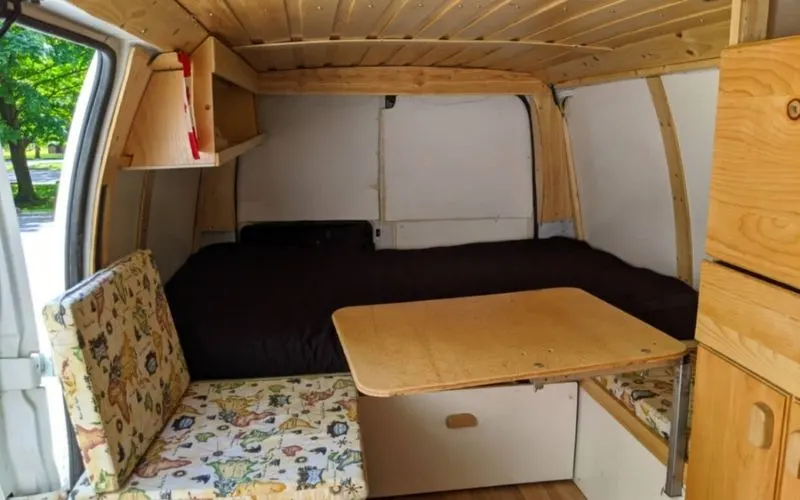
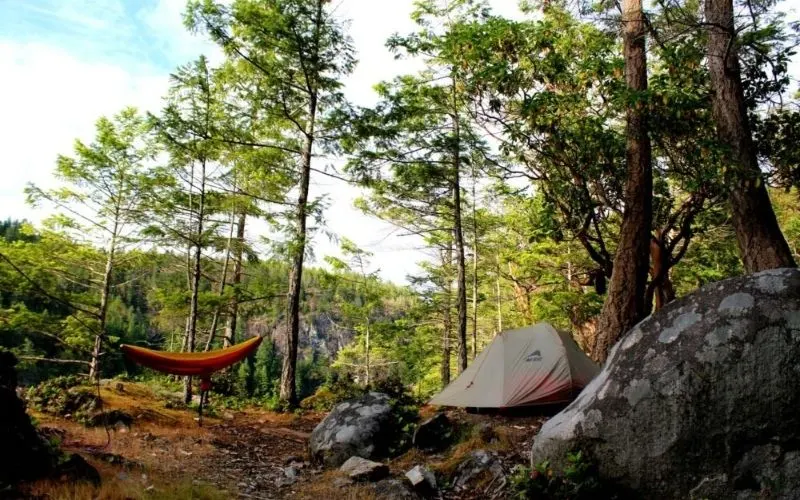
jack
Wednesday 19th of July 2023
canal flats civic center has water, internet and outlets (if you have a long extension cable; up in the rafters of the pavilion) outside
John
Sunday 18th of June 2017
Hi Gema, thank your for this great article. Years ago I traveled Canada from Coast to Coast (yes Victoria to St Johns) several times. At that time I had a YMCA membership in Vancouver - this gave me full access to every YMCA accross the Country. At this point in time such a membership starts at aprox $50 / mo for a senior - what a bargain.
John
Gemma
Monday 26th of June 2017
That's a good idea John! Thanks for the tip
Ryan
Tuesday 31st of May 2016
There are apps for finding free wifi. I have one on my phone called 'free wifi'. I am sure there are others. You can even download maps of where your going when you have an internet connection so that if you dont have any service when you get there you still have a map of where the wifi is. Thanks a lot for the tips on water and showers! Were planning a cross- canada trip and this is a big concern for us. Do you know if truck stops have water? Or if your allowed to park your camper there and sleep? Thanks
Meg
Friday 16th of October 2020
Depends where you go. Some have water at the pumps although I wouldn't recommend you drink it. Try for big chains like Flying J. Calgary on the SE side has space for rv parking. Kamloops best bet is Petro outside of town. Edmonton - the big one outside in Strathcona is good. Further east your best bet is Petro/Co-op as they're usually bigger and more chances of finding parking depending on time of day you arrive.
If you have those big sliders on the side of your RV safer to park on the outside perimeter where your slider is over the grass/curb and isn't in the next lane. Very hard to see in the middle of the night backing up a semi and you may get a unpleasant wake up call.
Hope this helps